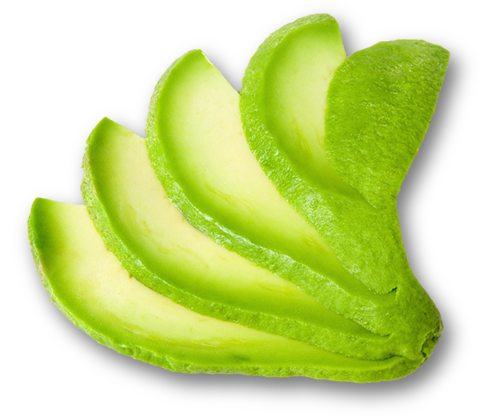

 Using Avocados Ripening Avocados It's easy to tell when an Avocado is ready to use. The fruit will be soft, and give a little when the skin is pressed. Also, the skin will be dark and less glossy than when it is not yet ripe. Cutting and Serving Avocados The best way to cut and serve an Avocado (if you don't have an Avocado slicing tool) is to first cut off the very top where the stem is. Then, from top to bottom, slice around the fruit down to the pit. This will allow you to separate the two halves by twisting a little and pulling them apart. The pit can be easily removed by sharply hitting the pit with the edge of your knife, then twisting to remove. The Avocado can then be cut into slices by cutting from the inside up to the skin, then pushing the slice off the skin. If the fruit is properly ripened, it will separate easily from the skin. Storing Avocados When an Avocado is ripe or nearly ripe, it can be prevented from over ripening by putting it into the refrigerator. This can delay the fruit becoming ripe for up to a week. Be sure to check it every couple of days to ensure that it is not wasted. Avocados are an excellent source of nutrition. Potassium The mineral helps regulate nerve function and move nutrients into cells while taking away waste, according to the US National Library of Medicine. Mono-unsaturated Fats Fiber Foliate Foliate can help prevent birth defects, specifically those that affect a baby's brain and spine, during the early weeks of pregnancy, according to the CDC. Around half of pregnancies in the United States are unplanned, the article said, which is why it's important for all women of childbearing age to have enough foliate as part of their regular diet.
|
|
|
Copyright 2022 Buy Avocados Online All Rights Reserved |